
The Northern California Bay Area is centrally located for a wide assortment of events during airshow season. An hour due north of San Francisco is Santa Rosa, located in the heart of wine country and probably best known as the home of Charles Schulz and his beloved Peanuts characters.
But for one weekend in late summer, it becomes a beacon for airshow fans to gather around.
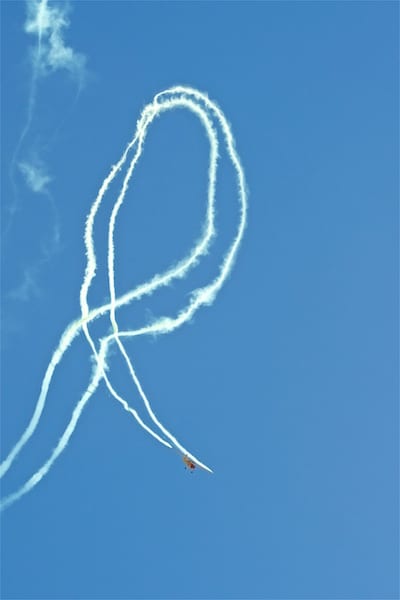
Kent Pietsch uses his 1941 Interstate Cadet as an aerial paintbrush during his aerobatic routine.
Typically more than 20,000 airshow fans come out for the Wings Over Wine Country Airshow put together by the Pacific Coast Air Museum (PCAM) in Santa Rosa and its army of volunteers.
This two-day show takes place at Charles Schulz-Sonoma County Airport (STS) and is the museum’s major fundraising event. This year’s toasty 90°+ temperatures over the weekend of Sept. 24-25 didn’t seem to deter many folks as they streamed in to enjoy the festivities.
The airshow grounds were located on the Kaiser Air Santa Rosa Jet Center’s extensive ramp space, keeping the area around the main terminal clear for regularly scheduled commercial traffic. For the first hour, folks could get up close with the warbird lineup on the flight ramp.

The museum’s Grumman A-6 Intruder and EA-6 Prowler were both open for public inspection, this was the first Prowler on the West Coast to be inducted into a public air museum and was flown here on its last flight.
Dozens of planes on static display, mostly military jets, old and older, dominated the area. PCAM owns a large, impressive collection of jet fighters, and many were moved over from the museum and set up for display.
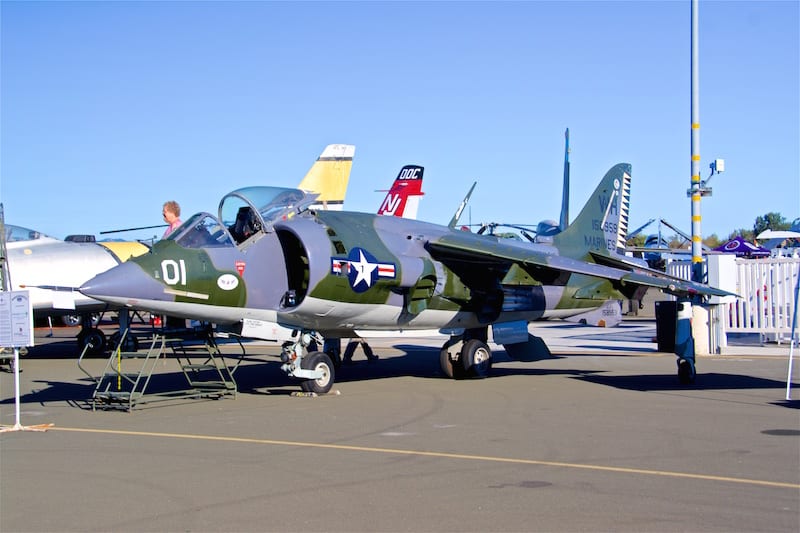
This British-built USMC AV-8C Harrier first flew in 1973, retired in 1985 and joined the Pacific Coast Air Museum collection in 2005.
Vietnam veterans could appreciate classics such as the F-105 Thunderchief, F-106 Delta Dart, A-6 Intruder, A-4 Skyhawk, and F-4 Phantom. Relatively newer jets included the F-16 Fighting Falcon, F-14 Tomcat, and AV-8 Harrier. These, and many others, had their cockpits open for the public to clamber into and pretend to be a jet pilot for a few memorable minutes.
The opening ceremony skydivers for this year were the US Air Force Wings of Blue Skydiving Team, carrying both the U.S. and Canadian flags down to terra firma.
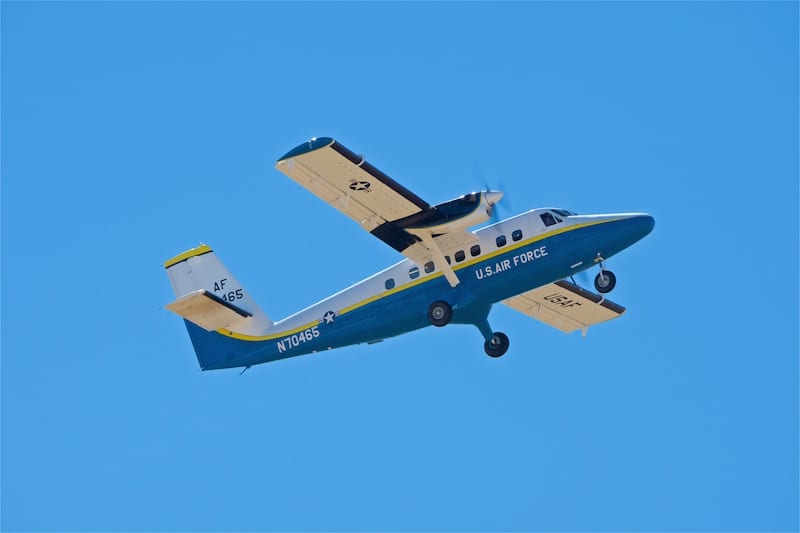
A de Havilland Canada UV-18 Twin Otter carries the U.S. Air Force Skydiving Tem “Wings of Blue” up to jump altitude.
The Canadian presence at the show was quite evident with flags located about the show grounds, marking the appearance of the Canadian Forces CF-18 Demo Team.
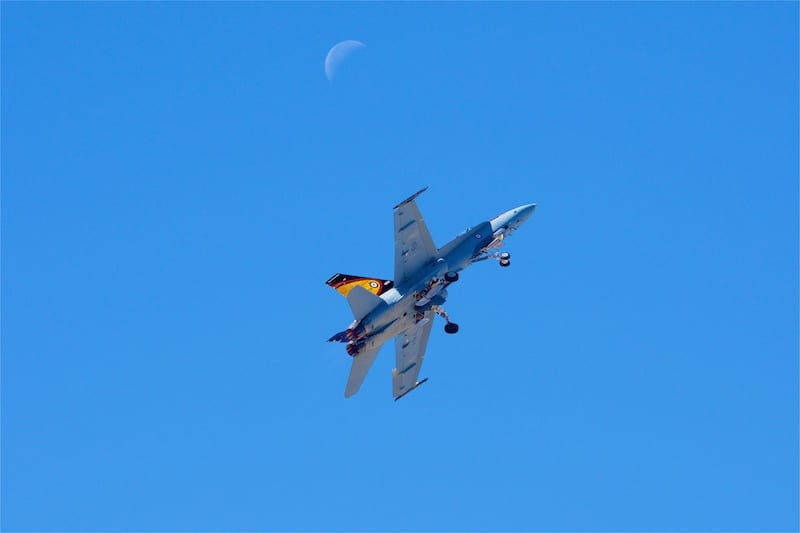
This Royal Canadian Air Force CF-18 Hornet heads for the moon immediately after takeoff as Captain Ryan Kean begins his demonstration.
For the 2016 season, their Hornet sports a vivid commemorative paint job marking the 75th anniversary of the British Commonwealth Air Training Plan. Striking yellow wings are the color of the primary aircraft used during the program, a black fuselage signifying the “darkest days” of World War II, and a red line for the “life line” of Canadian people towards the war effort. Over the course of the war, the BCATP produced 131,553 aircrew vital to the war.
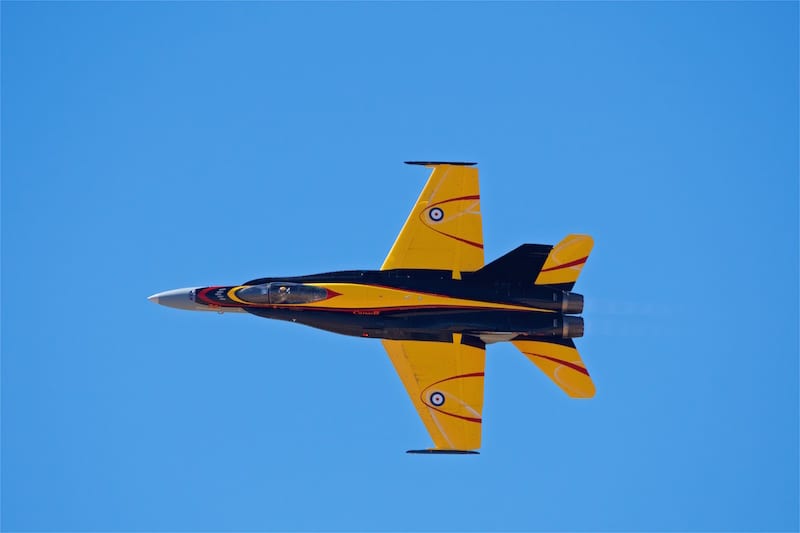
This Royal Canadian Air Force CF-18 Hornet features a custom paint scheme to commemorate the British Commonwealth Air Training Plan that began 75 years earlier to train aircrew during World War II.
The CF-18 was not the only jet performer on the schedule. Pilot Greg Colyer exercised his vintage USAF T-33 “Ace Maker II,” exciting the crowd with the first jet exhibition of the day, showing how nimble a 50-year-old jet can be.
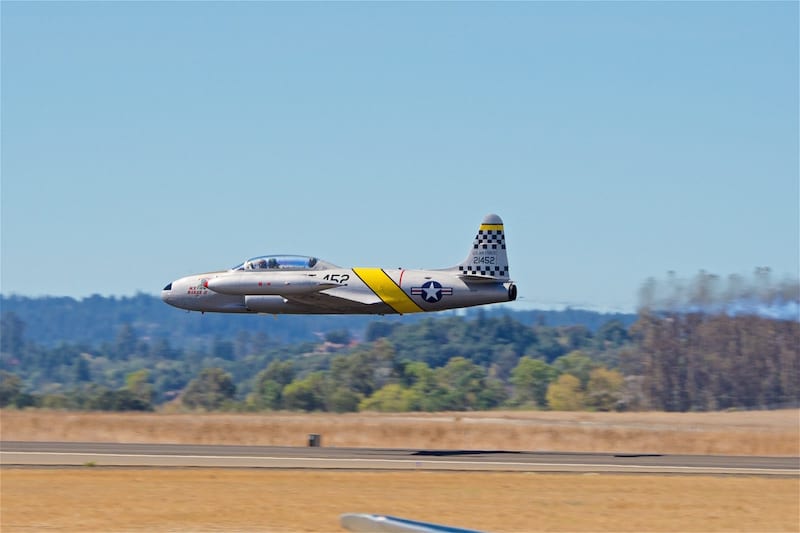
Greg Colyer performs a very low pass in his Lockheed T-33 Shooting Star during the show. In keeping with the Canadian theme of the show, this aircraft is actually a license-built Canadair CT-33.
The U.S. Navy was well represented with its loud F/A-18 Super Hornet demonstration, but what the fans were really waiting for was the headliner act — the Lockheed Martin F-22 Raptor.
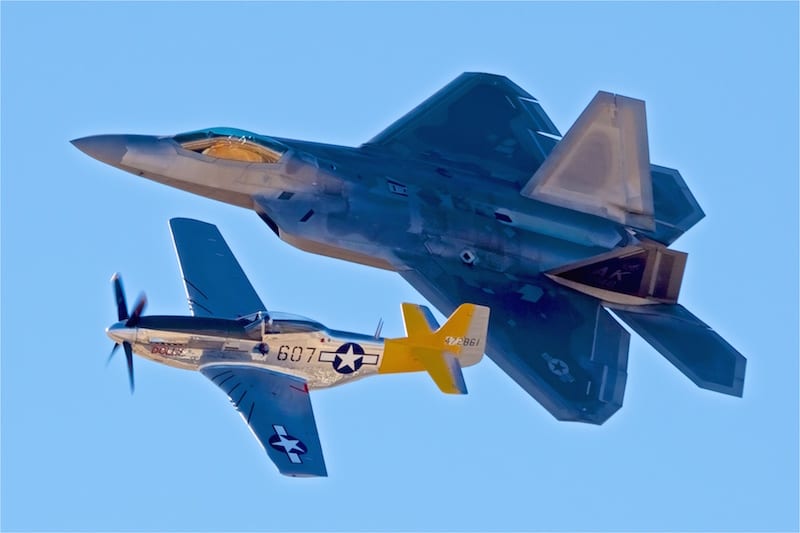
The Heritage Flight for Wings Over Wine Country paired a P-51 Mustang with the mighty F-22 Raptor.
The F-22 flew over from Travis AFB and wowed the crowd with its unique maneuvering capabilities, before pairing up with a P-51 Mustang for Heritage Flight flybys.
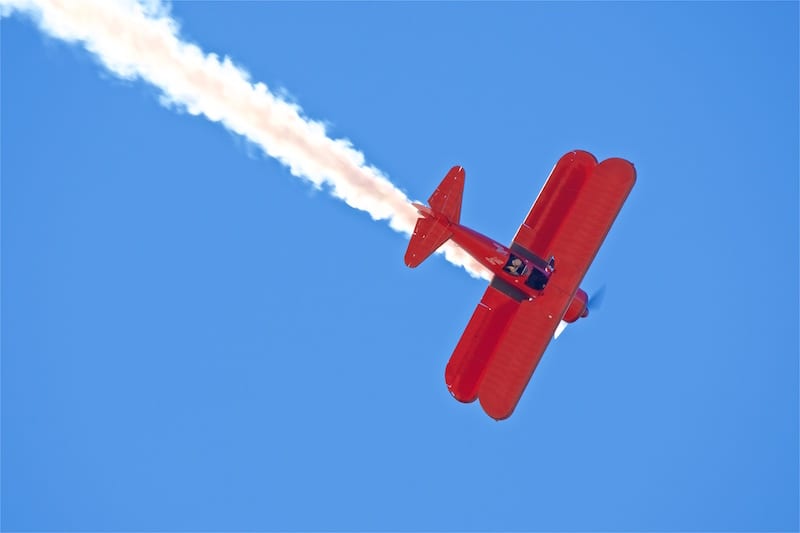
Vicky Benzing performs in her beautiful 1940 Boeing Stearman, in 1946 this aircraft was sold as war surplus for $770!
Solo aerobatic performances included Vicky Benzing in her lovely red Stearman and Kent Pietsch with his Intersate Cadet. Kent was in the air quite a bit, performing three times during the show with his comedy act, aerobatic routine and landing on top of a moving truck.
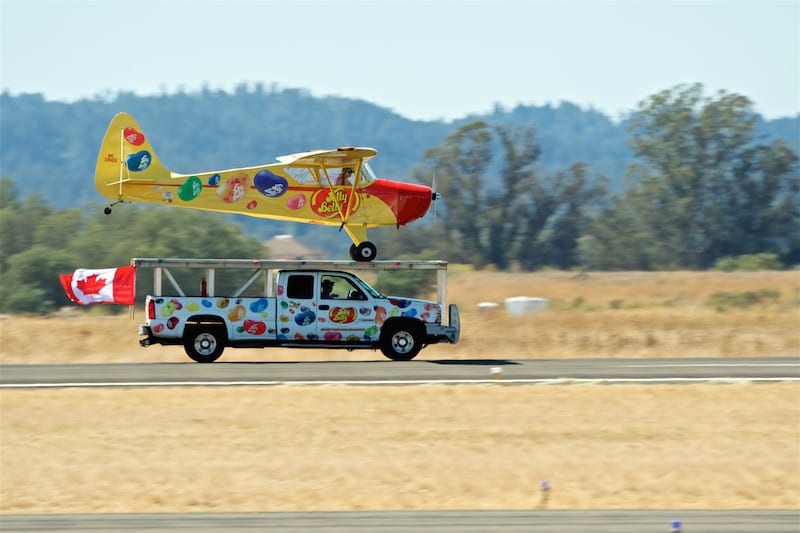
Kent Pietsch lands his 1941 Interstate Cadet on top of a pickup truck, just one of the three performances he did during the show.
The Sonoma County Sheriff’s Bell 407 “Henry One,” with the department’s SWAT team dangling underneath like garlic bulbs on a string, sprang into action as part of an air/ground operations demonstration to rescue a school bus held hostage by bad guys.
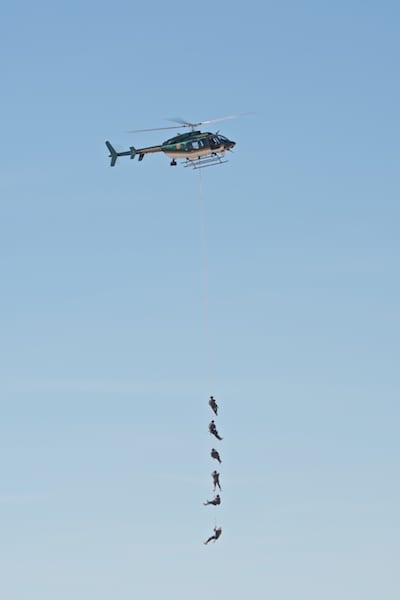
The local SWAT team in action with air support from the Sonoma County Sheriff’s “Henry One”
Warbirds took turns in center stage with formation flybys of four Nanchang CJ-6s from the RedStars Pilot Association.
The heavy iron took turns performing, with an assortment of fighters taking to the air with a whole herd of P-51 Mustangs, a P-40 Warhawk, F4U Corsair, and a rare P-47 Thunderbolt.
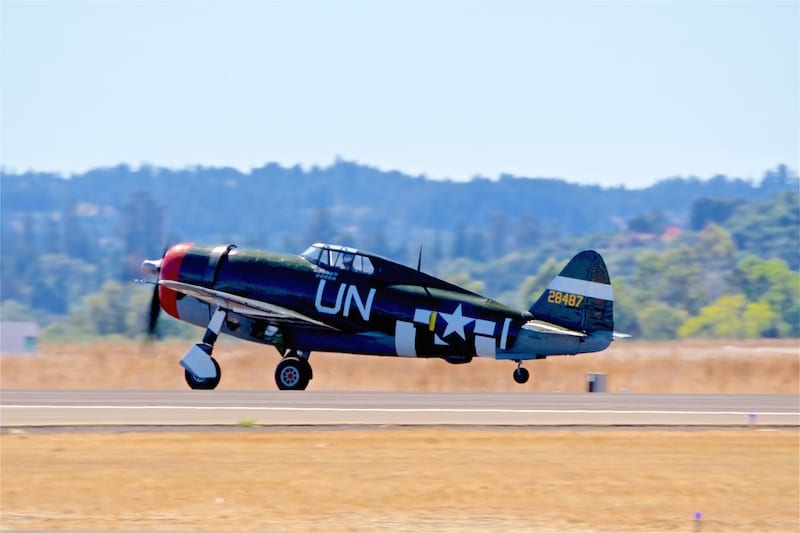
A Republic P-47G Thunderbolt, visiting from the Planes of Fame museum, rumbles into the air for some warbird flybys.
Other warbirds included a Douglas SBD Dauntless dive bomber, TBM Avenger torpedo bomber and a very rare Grumman C-1A Trader, a long-retired carrier onboard delivery aircraft.
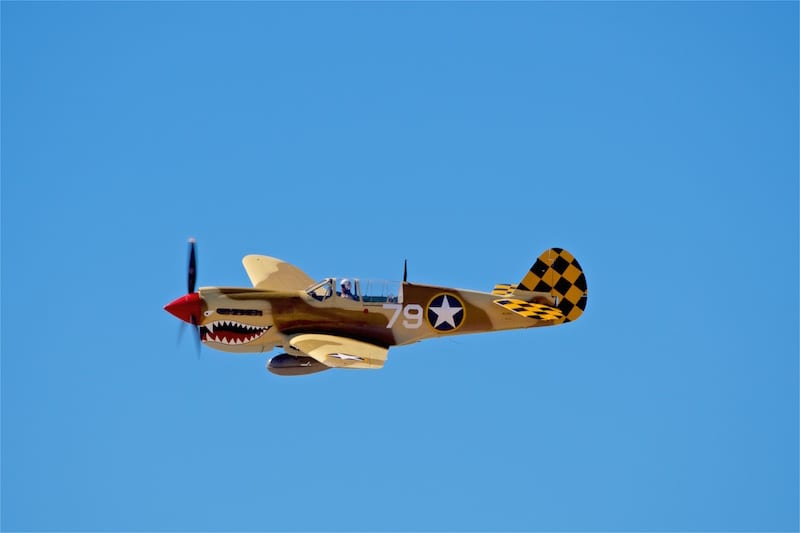
This Curtiss P-40N Kittyhawk is one of approximately 25 flyable P-40s remaining.
The Corsair, Dauntless, P-47 and a P-51 are part of the impressive collection at the Planes of Fame museum and flew up from Chino to participate in the airshow.
A few current military aircraft were on static exhibit, including a Canadian CF-18 Hornet, a C-17 Globemaster III from March ARB, the spare F/A-18 Super Hornet, and a California ANG CH-47F Chinook from Stockton.
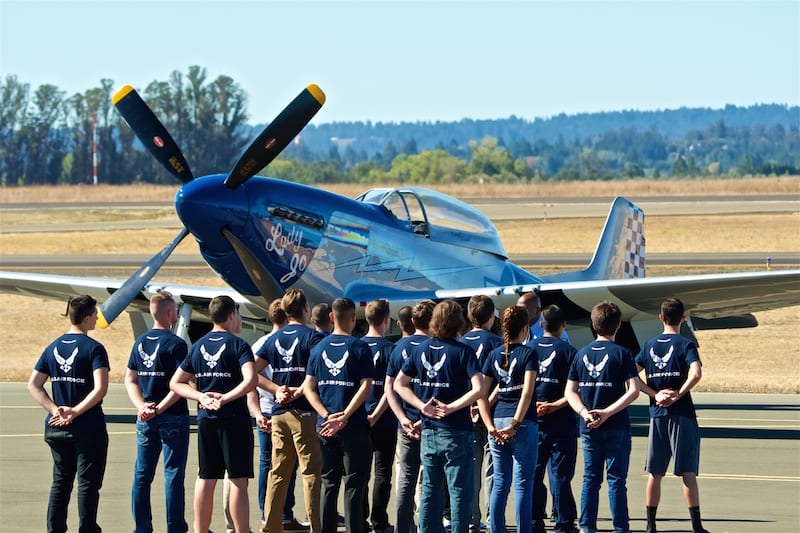
A group of new U.S. Air Force recruits prepares to take their Oath of Enlistment with a P-51 Mustang as a backdrop.
Notable non-flying events included the swearing in of new U.S. Air Force recruits and a golf cart with World War II veterans that paraded down the flight line to the adoration of the crowd.
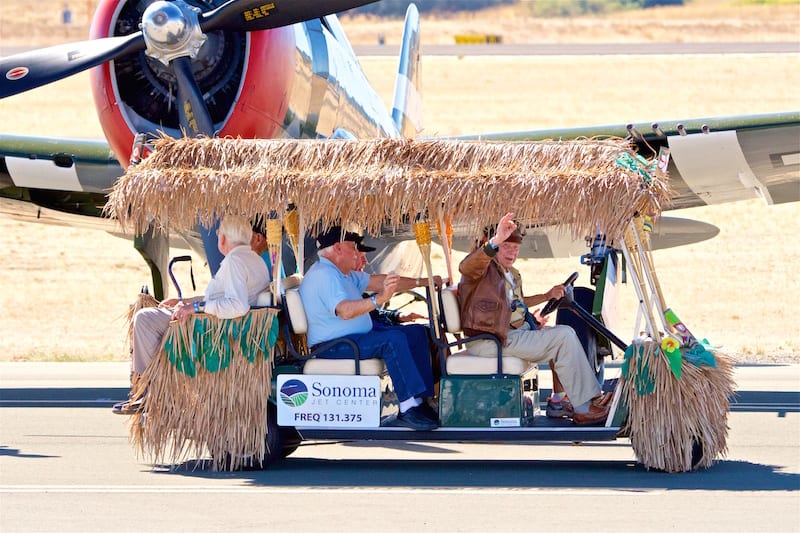
These World War II veterans enjoy an ovation from thousands of airshow fans. (All photos by Hayman Tam)
Charles M. Schulz-Sonoma County Airport is located just north of Santa Rosa, approximately 65 miles north of San Francisco. Built in 1939, operations in and out of STS include air cargo, private and corporate flights, military, search and rescue, fire fighting, law enforcement and training. The name was changed to Charles M. Schulz-Sonoma County Airport in March 2000 to honor Santa Rosa’s most famous resident.
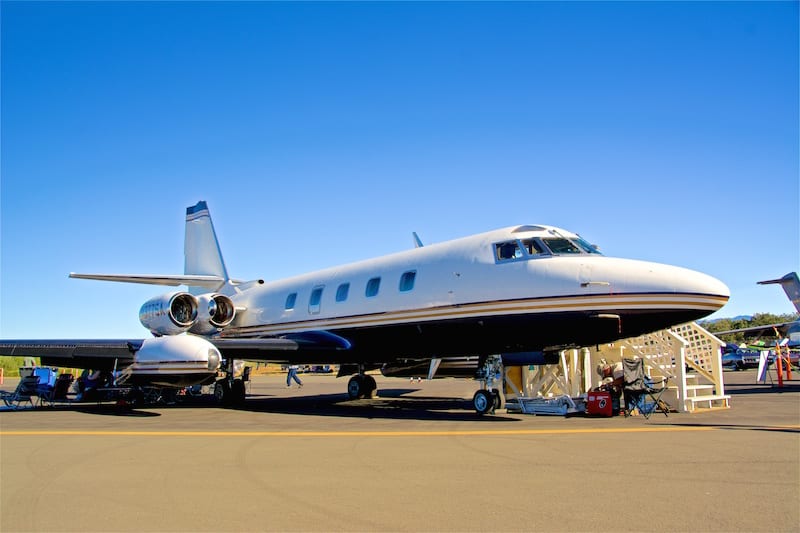
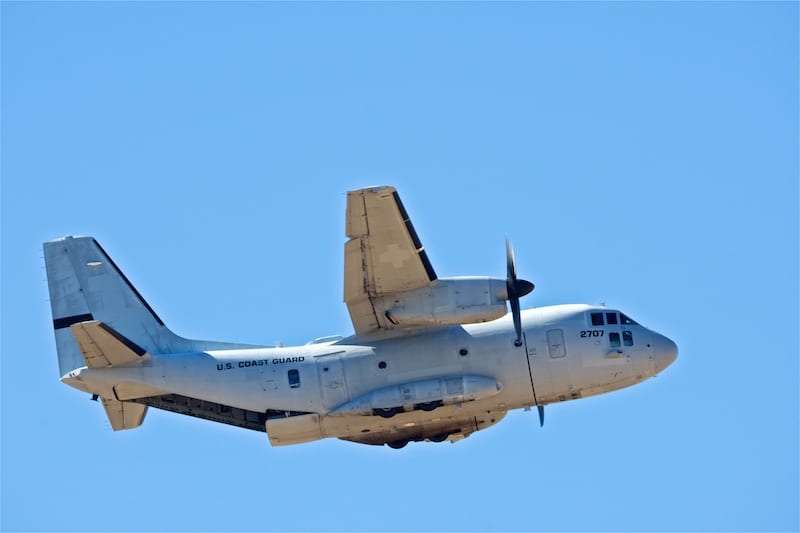
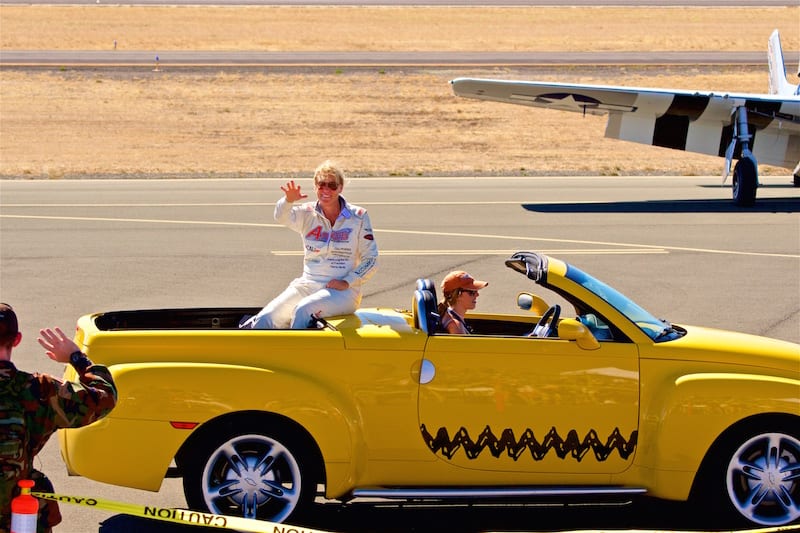
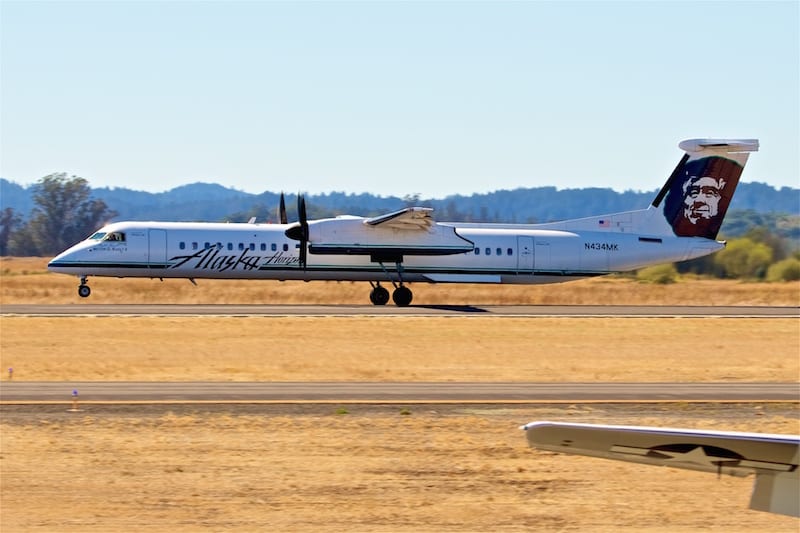
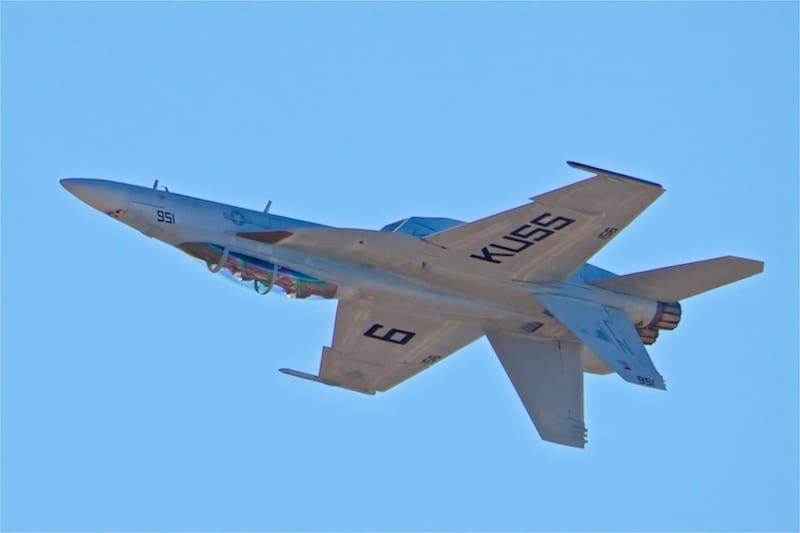

Source: http://generalaviationnews.comWings Over Wine Country